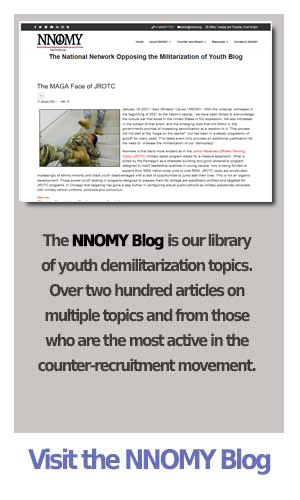Rick Jahnkow -
Another hole has been ripped open in the barrier protecting U.S. civilians from the influence of militarism. In December 2001, the U.S. House and Senate gave final approval to an education bill with a provision that severely erodes the right of local schools to control military access to campuses and personal information about students. The legislation, signed by President Bush on January 8, 2002, will go into effect soon as Public Law No: 107-110.
The military access law was part of a larger bill (H.R. 1) that provides various funds for local schools and programs to improve student performance. The bill also extends and changes programs begun under the Elementary and Secondary Education Act of 1965.







